At the recent Convention on International Trade in Endangered Species held in Bangkok (March 2013), the Thai Prime Minister pledged to ban the trade in ivory. Until now, ivory taken from elephants in Thailand could be bought and sold only within the Kingdom, but this did not stop smugglers to sell both ivory from Thailand and Africa on Chinese markets, where it is on high demand. The Thai PM’s decision is definitely a welcomed step forward in making sure elephants are no longer poached and abused simply for their tusks.
However, it can be argued that, there’s a lot more that Thailand can do to protect their elephants. After all, elephants are a symbol of the Kingdom and, historically, have helped the Thais during both war and peacetime. The initiative of several NGOs to improve the living conditions of elephants held in captivity in Thailand is commendable and, over the years, great improvements have certainly been made.
Beyond that, if you go to visit any zoo or elephant camp for tourists in Thailand, then you’ll most likely find elephants fidgeting restlessly on a concrete surface with a two-meter long chain wrapped around one of their back legs, greatly restricting their movements and incurring psychological damage on the trapped animals. Examples of this cruel treatment of the majestic pachyderms can be found at Dusit Zoo in Bangkok, at the elephant camp downtown Ayutthaya and even at the Thai Elephant Research and Conservation Centre in Khao Yai.
There are less than one thousand elephants still roaming freely in the wilderness in Thailand while the total population of Thai elephants kept in captivity is between 3,500 and 4,000. Unfortunately, living conditions vary from one camp to another, from good to decent to very bad or utterly appalling. An example of an excellent program which all camps should follow was put in place by the World Elephant Polo Association (WEPA), the international governing body that regulates the sport of elephant polo.
Established in 1982, the WEPA’s headquarters is located at the Tiger Tops Jungle Lodge in the Royal Chitwan Park in Nepal. In comparison to Thailand, there are only about twenty elephants left in the wild in Nepal, with only a few hundred in captivity. Among them, a few select elephants are chosen, maintained, and trained for the World Elephant Polo Tournament which is played every year on a grassy airfield in Megauly, Nepal, and in Hua Hin, Thailand.
The system put in place by WEPA is very clear with regards to the way elephants in captivity should be treated. During the day, the elephants are taken out to the fields to roam relatively freely and are fed both grass – the elephant’s staple food – and special supplements containing vitamins and good nutrients. The elephants are bathed daily and, when not playing polo, the elephants at the camp in Nepal are used to take visiting guests on a pleasant ride on wild safaris.
Noticeably, this very humane treatment of the elephants is not just reserved for the off-season only, when the elephants are not used in polo games. On the contrary, WEPA has established strict rules for the way elephants are used during polo games and any harsh treatment by the mahouts – the “drivers” sitting on the elephant’s neck – is strictly prohibited.
Apart from that, the games must end at noon to keep the animals out of the midday sun and elephants are not allowed to play two consecutive games. During the break time, they receive snacks and are watered. In the case when an elephant is injured, the remaining game of polo is played with one less elephant in each team, relieving the injured elephant from the game and maintaining both sides with an equal number of players.
Obviously, compared to the harsh conditions other elephants are put under in several work camps throughout Asia, the elephants under WEPA’s wing are far better off. Unfortunately, elephant polo is also played in India and Sri Lanka, but these two South Asian countries are not part of the World Elephant Polo Association and thus no-one can satisfactorily monitor how they treat their elephants.
In Thailand, elephant polo is promoted by Anantara Resort which, in 2001, held the first King’s Cup Elephant Polo Tournament at its resort in Hua Hin. Between 2006 and 2010, the tournament was held in the Golden Triangle in the north of Thailand but, in 2011, was moved back to Hua Hin. The event is a big publicity stunt by the Anantara Group with many well-recognized brands sponsoring the tournament. International and local celebrities wearing their best summer hats can be seen in the VIP stands and the money raised is donated to different organizations that fight for the protection of Thai elephants.
Rules in Thailand vary slightly compared to those followed in Nepal. In Thailand, the polo games last for two seven-minute chukkas, or halves, as opposed to 10 minutes in Nepal with a 15 minute interval when the teams change pitch ends. The teams are made up of three (or four) elephants, and each pachyderm has both a player and a driver riding on its back and neck. The field of play is 100 meters by 60 meters long with two goals at each end of the pitch. Elephants are not allowed to lie down and block the front of the goal-mouth and they may not pick up the ball with their trucks at any time during play time. To do so constitutes a foul and a free hit is awarded to the opposing team.
Elephants of any height, weight and sex can be chosen to participate in the game and, to replenish their energy, the animals must be fed with sugar cane or vitamin-packed rice balls during recess time. In contemporary times, the game is played with a standard polo ball but, in the early incipient phases of the game, many years ago, elephant polo was played with a soccer ball which the elephants liked to stamp on and burst.
The game is played, obviously, while riding the elephant with the player telling the mahout which way to steer the elephant. To turn an elephant left or right, the “drivers” use an elephant goad, which consists of a hook attached to a short stick. The hook is used to pull at the elephant’s big ears, the elephant turning to the left or right, depending on which ear is pulled at, in an attempt to ease the pain. If you look carefully at the elephants’ ears, you’ll notice that they are rather frayed from all the pulling that they have suffered from by the mahout in order to domesticate and train the elephant.
Using a 10-meter long stick with a polo mallet head at the end, the players are only allowed to hit the ball on the right-hand side of the elephant. To do otherwise, is considered a foul. Great care must be taken when the elephants are turned around to change sides of play as the long sticks can easily injure other players or elephants. The male players must only use one hand to hold the stick while women players can choose to hold it with either one or two hands.
As elephant polo players come from various backgrounds and countries – including European nations such as England and Switzerland – they generally do not own the elephants and do not usually train regularly on the particularly large animals. Instead, some players train while sitting on top of a slow-moving off-road vehicle and swing at a ball with their polo stick or swing more durable golf clubs through the water in a swimming pool. These two training methods are used to establish both the balance and strength of a polo player while they train to become successful in the required skills.
The game of elephant polo starts in the centre circle when the elephant-riding umpire throws the ball between the two opposing elephants and riders inside the ring. During the play, at least one elephant must remain in each half at all times, a measure taken to avoid elephants bumping into each other. If a player falls off the elephant or the stick is broken, the game is stopped and restarted with a throw-in. All players sit on a flat saddle with stirrups secured to the elephant’s back by straps. The mahouts ride barefooted and keep their feet under the elephants’ ears for balance, while the players usually wear long leather boots and polo hats together with their team’s shirts.
Elephant polo is an exciting game to watch and if you need another reason to travel to Nepal, then be informed that the 32nd World Elephant Polo Association World Championship will be held there between November 25-29, 2013.
The 2013 King’s Cup will be held between the 28th of August and the 1st of September at Hua Hin’s Suriyothai Army Base, located about 20 minutes from Anantara Hua Hin Resort and Spa, which is the organizer of the event. Seats are limited, so advanced booking is required and is obviously essential. For more information and booking call 03 252 0250, send an email to [email protected], or visit the tournament’s official website.
The photographs were made available in the organizers media kit.
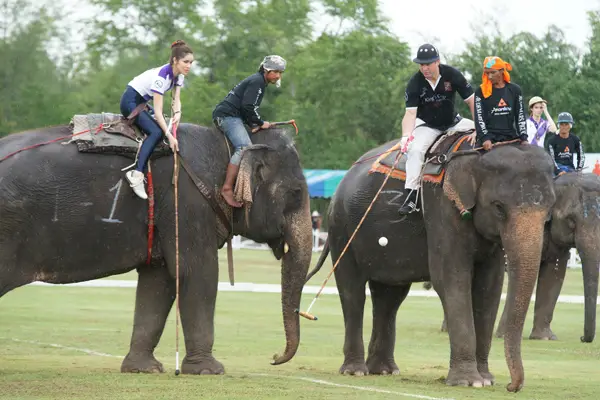
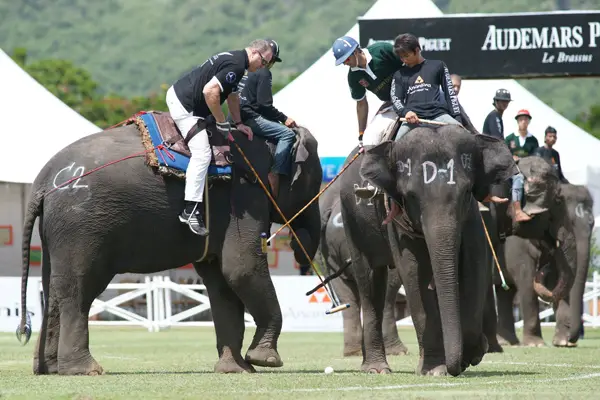
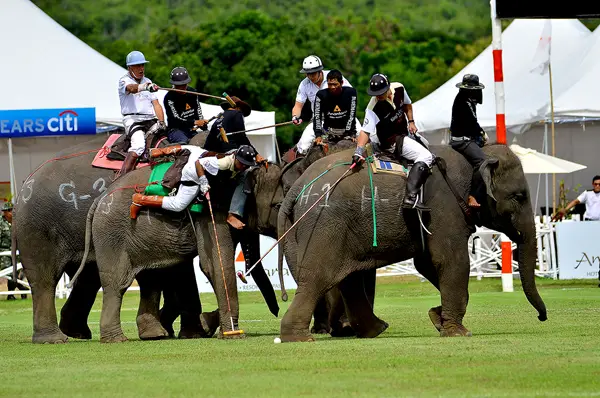
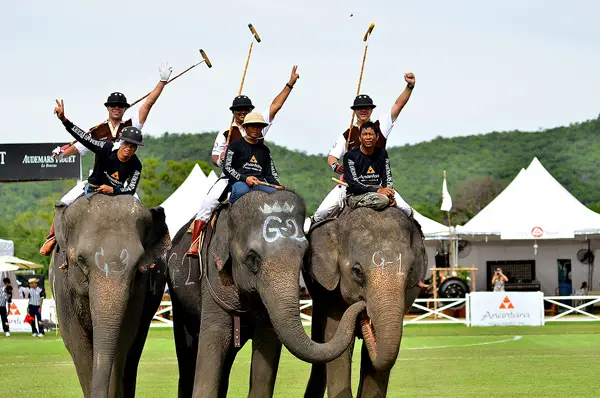
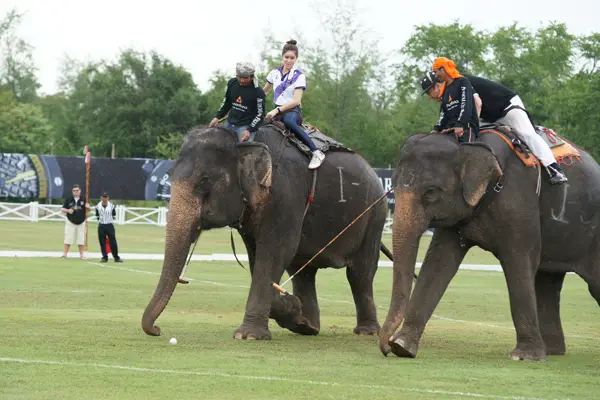
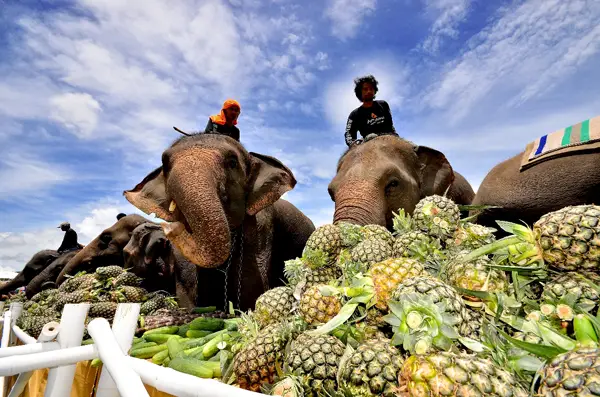


Hi, I just loved this post – so much interesting information!
I was wondering if you would allow me to use one of the photos on my Instagram feed – @gypsyat60 ?
The thought of seeing an elephant polo match is now definitely on my wish list.
Many thanks :o)
Yes, of course. Just make sure you give credit and tag me @vmsimandan too.